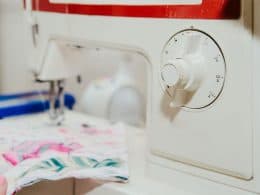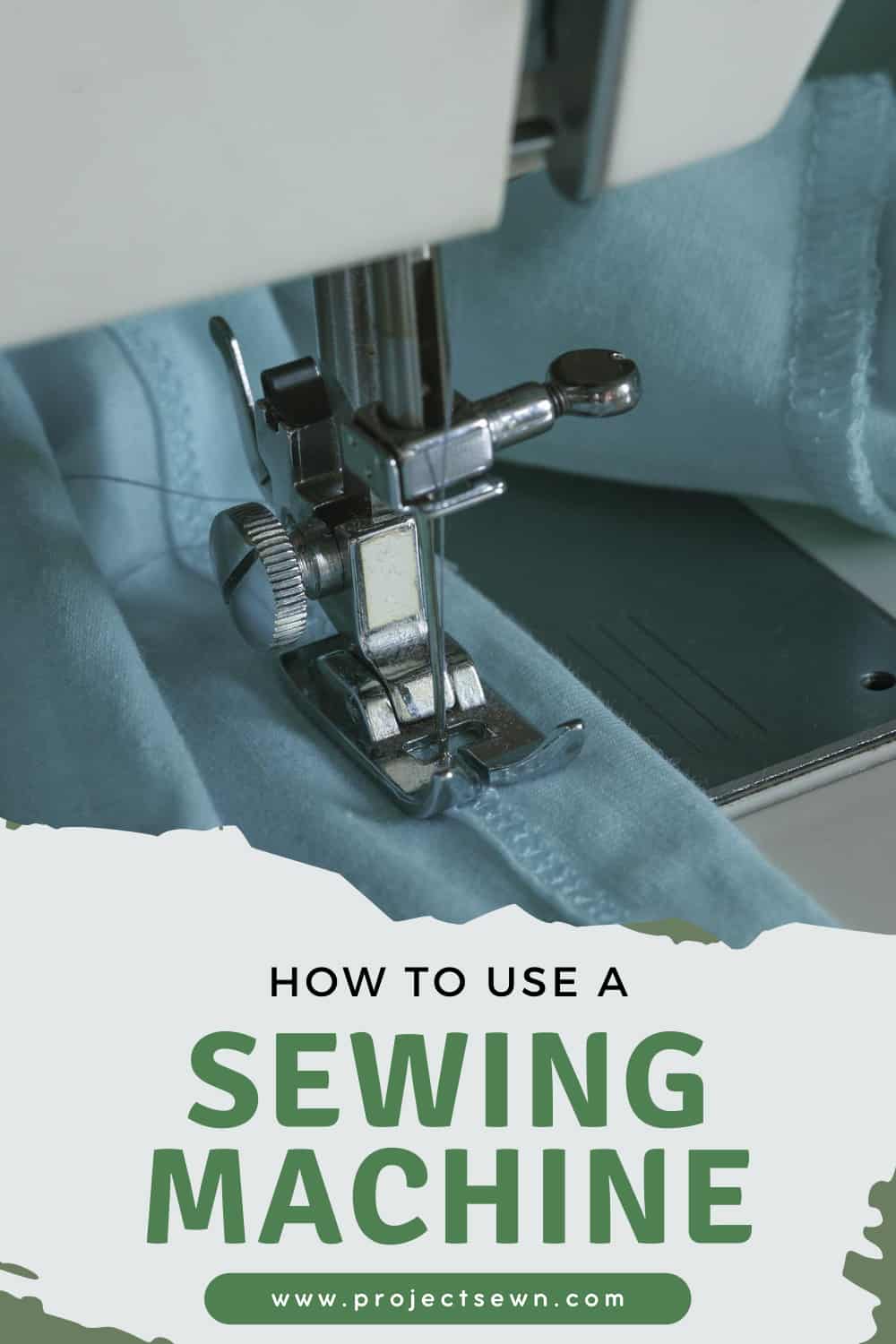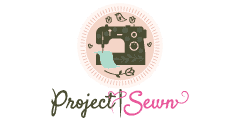Are you tired of spending money on clothes that are boring or have low quality stitches? Do you think that you can create better home decor for your house than what you find available in the shops? Then it is indeed time to invest in a sewing machine.
You will think, and you will be right, that you never put your hand on one and you won’t know how to use it. The answer is simpler than you think. This is why I decided to write down all you need to know in order to embrace your creativity and buy a sewing machine. So let’s start!
Table of Contents
How Does a Sewing Machine Operate?

Before going to the actual operation, let’s make sure that you understand the basics such as what is a sewing machine and what is it used for.
So, a sewing machine is a device or an instrument which is handled to sew together two, or more separate pieces of materials with the aid of a thread. With its help, you can easily fix or create clothing items in a shorter time than you would if you would sew them by hand.
There are 3 big classes of sewing machines:
- Mechanical. This is the most basic kind of sewing machine for newbies. They have manually controlled features, making them less expensive and therefore more affordable to learn on.
This type of sewing machine presents big rotatory dials for choosing the stitches, to modify the stitching speed or to change the width and length of the stitches. - Automatic. This type is somewhere in the middle between the mechanical and the computerized ones. They have an on/off button to start/stop the machine such as the computerized sewing machines but also dials as the mechanical ones.
- Computerized. This is the most powerful type of sewing machine. These products offer a computerized method for accessing and managing their features. They come packed with an LCD that let you do the settings and pick the stitches.
I don’t want to move further without making sure that you understand the basic part of the sewing process.
Please watch the following video to see how a stitch is created. This is a notion that you will meet many times while reading this sewing guide.
To make a short recap of the tutorial, this is what happens:
- The needle with the thread inserts the fabric;
- When the needle penetrates the material with thread in it, the hook reached from the rotatory shuttle uses the thread and jumps, creating a loop;
- While the loop is formed, the bobbin which is located within the rotatory shuttle provides another string and secures the one extending from the needle;
- Finally, the needle jumps up and stretches the thread to produce a nice stitch. The similar process is replicated until finish sewing the piece we want.
Sewing Machine Components
I mentioned things such as bobbin or needle, so let’s see what are they and what are actually all the components that can be found in a sewing machine.
Starting button
The starting button, also known as the on/off one, allows you to sew the fabric without the help of a foot pedal. Just press the button and the sewing machine will begin working. To stop the machine, do the same, but this time press the OFF button.
Needle
The needle is the tiniest part of a sewing machine but definitely is the most significant one. The needle is connected with a needle bar with a screw and it penetrates the material when sewing.
There are several kinds of a sewing machine, each one suited for different kind of purposes, therefore they have different kinds of needles.
To understand what I am saying, I will give you an example. If you have to work with a thin fabric, such as silk, you will require a needle proper for that kind of cloth. However, for a thicker material such as leather, you will require a different kind of needle.
There is a needle sizing system and their size can vary from 8 to 18, where 8 is the finest and 18 the biggest. So, to keep our above example, you will need an 8 needle to sew the silk and an 18 one for the leather.
Needle Bar
The needle bar is the part where the needle is attached to. It serves to shift the sewing machine up/down when you tailor the material. The needle is connected with the needle bar by a screw.
Needle Plate
The needle plate represents an essential part when stitching light or heavy fabrics. This is something where you separate the material for a simple and relaxed sewing activity. It aids you to control your tailor plan at the moment of stitching.
Spool Pin
This small pin can be made either from metal or from plastic. It is located at the top of the machine and it is the part that keeps the thread on it.
Bobbin
The bobbin is a very relevant element of a sewing machine as it provides the thread from the base required to secure the stitches.
Threading bobbin is rather simple with some sewing machine as they come with a clear bobbin winding mode. It is contained in a case named as the shuttle.
Bobbin Case
The bobbin case holds the bobbin moving inside it and provides the necessary thread for forming stitches.
Bobbin Winder
On top of the device, on the right side of the spool pin is a secondary smaller pin next to a tiny wheel. This is what is known as the stopper and the bobbin winder and it runs at the same time with the spool. Before you begin sewing, all of them help in turning the thread on the bobbin.
Presser Foot
The presser foot keeps the material tight so that you make accurate and precise stitches. It further assists with pushing the material backward as you proceed to get stitches. There are various kinds of presser foot that are each for distinct goals.
The presser foot can be replaced rather simple. Some sewing machines models come with more than one model of presser foot as accessories.
Thread Feed
The threading system of a sewing machine is important for stitching without trouble. The thread, before touching to needle moves within various channels and one has to go sequentially.
If it doesn’t reach all channels, you may not get nice stitches, sometimes it may lead to the breaking of the thread as you sew.
Thread Tension Settings
In order not to break the thread, you will need to set up your thread tension accordingly. If it is too low, you will notice that the thread is released in such a way that will create uneven stitches, especially the bottom ones. But, if the thread tension is too high, you will see that the thread will often break.
Stitch Length Controller
The stitch length controller allows you to set the stitches’ length. To give you an example of why this matters, I will tell you that for a thinner fabric it’s ideal to have a smaller stitch and for heavy material such as denim you should use a bigger stitch length.
Stitch Selection Dial
Another great aspect when talking about sewing machines is the number of stitches that they offer. Depending on the type of the sewing machine, mechanical or computerized, you can either choose the stitches with the help of a dial or of a touchscreen.
Reverse Stitch Lever
As a general case, sewing machines that come with a reverse stitching feature also come with a reverse stitch lever. It assists you to strengthen the stitches making it very helpful for fabrics such as leather which has to be stitched tightly.
Stitching Speed Feature
If you have a mechanical sewing machine, the speed you create the stitches is managed by a rotatory dial. The computerized ones will let you control the speed by setting it with the help of their display screens.
You just have to touch the screen to raise or lower the stitching speed.
To have a visual image of all the components I’ve described, check out the video presentation below:
Start Using the Sewing Machine
When you buy a sewing machine, you will also receive an instruction manual, so the first thing you need to do is to read it. These guides will explain every particular action you have to take in order to set up your machine, such as correctly positioning the thread. Once this is done, you need to follow the 6 steps I am going to present and you can start sewing.
Step 1: Take the material you want to sew;
Step 2: Check the presser foot lever up and pull it;
Step 3: Put the material underneath the presser foot where you need to commence the stitching. Pull down the presser foot lever so that the material is ready to be tailored.
Step 4: Check the metal plate for the guidelines for a straight stitch. Be sure that you maintain the material in the position such as said on the metal plate.
Step 5: When everything is set, press the pedal, or the on/off button and the machine will begin producing stitches and relocate the fabric behind. Modify the speed for the stitches depending on your needs and skills.
Step 6: When you arrive at the endpoint and must take a 90-degree angle, check if the machine is stopped and has its needle down.
After that, pull up the presser foot lever, turn the material 90-degrees and push down the lever. Begin sewing straight again until you complete the edge of the fabric.
I’ve picked a video presentation made by Angela Wolf, the Brand Ambassador from Brother (one of the biggest sewing machine brands), so you can fully comprehend the basics of using a sewing machine. Click on the next link:
As you can see it is very simple to start using a sewing machine. However, there are some things that you should be careful about:
- Don’t be compulsive with your machine. Even if it doesn’t work as you expect don’t become violent towards it;
- When threading the sewing machine, be sure that it is unplugged;
- Don’t pick the cheapest machine on the market. The better the brand, the better time you will have with your sewing machine.
- I know that this sounds logical and I should not mention it, but don’t put your fingers very close to the needle. Accidents might happen when you don’t really know how to handle the machine.
Tips and Tricks
There is no right or wrong when it comes to learning how to use a sewing machine, but I will give you the tricks that helped me when I was at the beginning of the road:
- Practice as much as you can. When you think you know how to make a straight stitch, go ahead and start making zigzag ones;
- Work with materials such as cotton first. It is not too thin and not too thick, so it will be easier for you to work on. Also, it is not as expensive as silk or leather.
- Pick a good spot where to work, preferably one that will offer you personal space. You will need it at the beginning.
- Don’t be afraid of failure. Nobody was born with this knowledge or any knowledge as a matter of fact.
Conclusion
As you can see, sewing with a sewing machine is not difficult at all. So don’t be afraid to buy a machine and embrace your dream. There are multiple products suited for beginners such as the computerized sewing machine from Brother CS6000i or the Singer 9960. You just need to find the right one for you.
I am sure that you still have questions, so please don’t be shy and use the comment section below. Also, if you liked the article you can share it with your friends by clicking on the social media buttons.
That’s it for today! Enjoy sewing!

